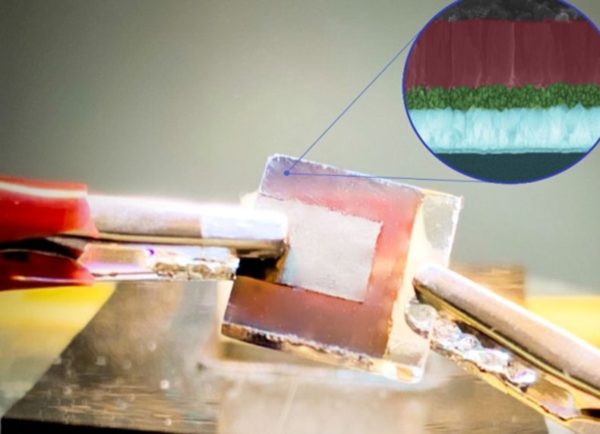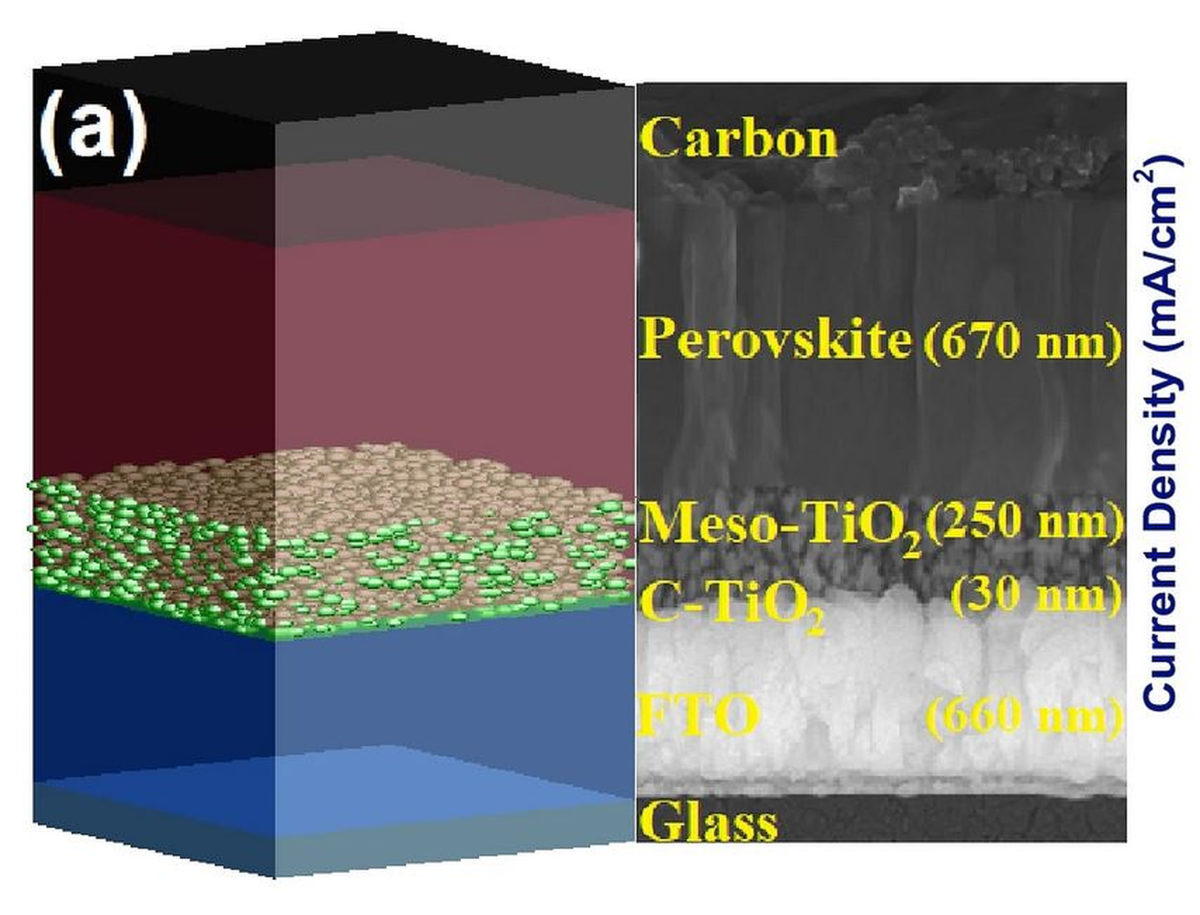An international research group has proposed a new design for perovskite solar cells without a hole transport layer (HTL), based on carbon-based materials to replace the metal contact and the HTL.
The researchers said that carbon-based perovskite solar cells have reached efficiencies of around 15%, which is considerably lower than those achieved by cells equipped with HTL/metal back contacts. Nanoparticles of titanium oxide (TiO2) in the electron transfer layer (ETL) increase recombination due to the trapping of electron carriers and the low mobility of carriers in the perovskite-filled mesoporous structure, thus leading to the lowest performance.
“This, in turn, affects hysteresis behavior in measuring the efficiency and instability of the device due to the ion migration,” the researchers explained. “Providing a carbon-based planar structure by removing mesoporous TiO2 can not only reduce the device's hysteresis behavior, but also take another step toward commercializing perovskite-based solar cells by reducing the cost of mass production.”
In the proposed cell design, two plasmonic nanoparticles known as Ag@SiO2 and SiO2@Ag@SiO2 were added to the cell photoactive layer and a copper(I) thiocyanate (CuSCN) interlayer was placed at the perovskite-carbon interface. The latter purportedly has excellent semiconducting properties, including high hole mobility, wide bandgap, optical transparency, and thermal and chemical stability.

The HTL-free optimized plasmonic cell achieved a power conversion efficiency of 19.72%, an open-circuit voltage of 0.918 V, a short-circuit current of 28.05 mA/cm2, and a fill factor of 76.57%.
“The used solution-processed inorganic p-type CuSCN layer with a thickness of 30 nm at the perovskite-carbon interface has increased the device power conversion efficiency by 35% to 26.58%, thanks to the increased open-circuit voltage and fill factory to 1.156 V and 81.64%, respectively,” the academics said, referring to the results of the simulation. “The remarkable improvement of the open-circuit voltage is attributed to better interfacial energy alignment between the perovskite and CuSCN.”
They said they obtained similar results by increasing the carbon working function with suitable additives or binders to the carbon ink. “These results pave the ways to achieve high efficiencies in carbon-based perovskite solar cells,” they concluded.
“Compared to metal electrodes, carbon materials are eco-friendly, flexible, hydrophobic, and have high surface areas and porosities. Hydrophobicity of carbon allows it to be used as the top electrode and HTL, which results in an air-stable solar cell even without encapsulation,” the research's corresponding author, Mojtaba Abdi-Jalebi, told pv magazine. “Flexible solar panels with air-stable properties that can be attached to a variety of surfaces at a lower cost will be possible with these properties. Technology advancements are also catching on in the areas of wearable electronics and indoor photovoltaics. Due to their lower cost and excellent performance, carbon materials are also appealing commercially.”
They described the solar cell design in “Impacts of plasmonic nanoparticles incorporation and interface energy alignment for highly efficient carbon-based perovskite solar cells,” which was recently published in Scientific Reports. The research group includes scientists from the Chinese Academy of Sciences, University College London, and the University of Isfahan in Iran.
*The article was updated on April 6 to specify that the efficiency increases were achieved through a simulation and to add a statement from the research's corresponding author.
This content is protected by copyright and may not be reused. If you want to cooperate with us and would like to reuse some of our content, please contact: editors@pv-magazine.com.




2 comments
By submitting this form you agree to pv magazine using your data for the purposes of publishing your comment.
Your personal data will only be disclosed or otherwise transmitted to third parties for the purposes of spam filtering or if this is necessary for technical maintenance of the website. Any other transfer to third parties will not take place unless this is justified on the basis of applicable data protection regulations or if pv magazine is legally obliged to do so.
You may revoke this consent at any time with effect for the future, in which case your personal data will be deleted immediately. Otherwise, your data will be deleted if pv magazine has processed your request or the purpose of data storage is fulfilled.
Further information on data privacy can be found in our Data Protection Policy.